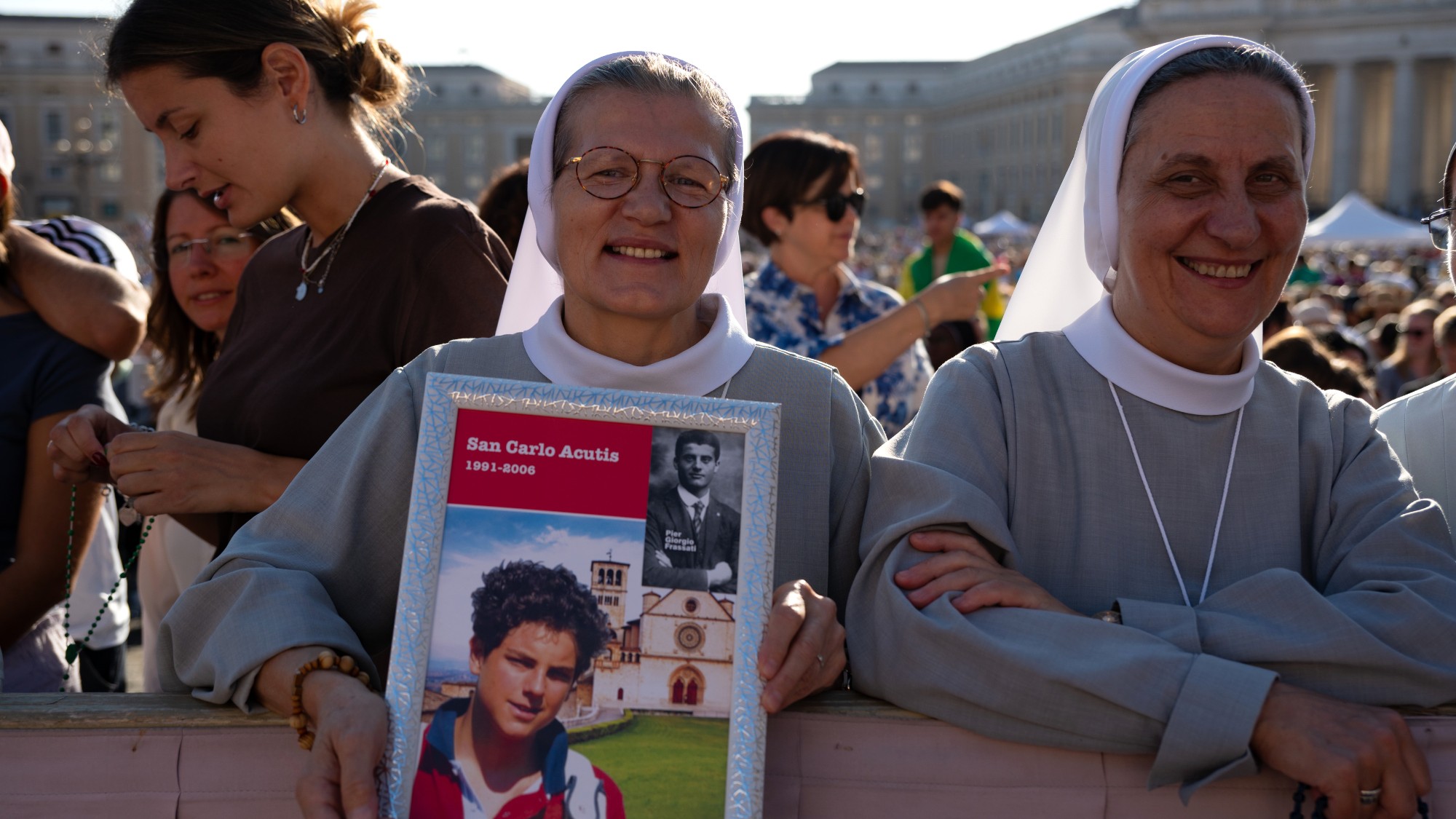Thousands flock to Missouri to see body of nun who died in 2019


Over the last week, Catholics from across the United States have been heading to Gower, Missouri, to see the body of a nun who died in 2019.
The Benedictines of Mary, Queen of Apostles, said in a statement that in April, the body of Sister Wilhelmina Lancaster was exhumed in order to build an addition of a St. Joseph shrine. They were expecting to find bones, but discovered the nun's body was nearly intact. Lancaster was buried in a simple wooden coffin and was not embalmed.
Once word spread about the state of Lancaster's remains, visitors began to descend on Gower, population 1,800, to see and touch the nun's body. Her fellow nuns "wanted to make her accessible to the public ... because in real life, she was always accessible to people," visitor Samuel Dawson told The Associated Press.
The Week
Escape your echo chamber. Get the facts behind the news, plus analysis from multiple perspectives.

Sign up for The Week's Free Newsletters
From our morning news briefing to a weekly Good News Newsletter, get the best of The Week delivered directly to your inbox.
From our morning news briefing to a weekly Good News Newsletter, get the best of The Week delivered directly to your inbox.
The body will be placed in a glass shrine, with visitors able to take dirt from her grave. In a statement, the Diocese of Kansas City-St. Joseph said "incorruptibility has been verified in the past, but it is very rare. There is a well-established process to pursue the cause for sainthood, but that has not been initiated in this case yet." The sainthood process can start five years after a death.
It is not unheard of for a body to be exhumed and show little decay, Rebecca George, an anthropology instructor at Western Carolina University in North Carolina, told AP. Coffins and clothing help preserve bodies, she said, and it's common to see the "mummification" of remains that were not embalmed. "Typically, when we bury people, we don't exhume them. We don't get to look at them a couple years out," she added. "With 100 years, there might be nothing left. But when you've got just a few years out, this is not unexpected."
A free daily email with the biggest news stories of the day – and the best features from TheWeek.com
Catherine Garcia has worked as a senior writer at The Week since 2014. Her writing and reporting have appeared in Entertainment Weekly, The New York Times, Wirecutter, NBC News and "The Book of Jezebel," among others. She's a graduate of the University of Redlands and the Columbia University Graduate School of Journalism.
-
 Political cartoons for January 17
Political cartoons for January 17Cartoons Saturday’s political cartoons include hard hats, compliance, and more
-
 Ultimate pasta alla Norma
Ultimate pasta alla NormaThe Week Recommends White miso and eggplant enrich the flavour of this classic pasta dish
-
 Death in Minneapolis: a shooting dividing the US
Death in Minneapolis: a shooting dividing the USIn the Spotlight Federal response to Renee Good’s shooting suggest priority is ‘vilifying Trump’s perceived enemies rather than informing the public’
-
 Pope Leo canonizes first millennial saint
Pope Leo canonizes first millennial saintSpeed Read Two young Italians, Carlo Acutis and Pier Giorgio Frassati, were elevated to sainthood
-
 Southern Baptists endorse gay marriage ban
Southern Baptists endorse gay marriage banSpeed Read The largest US Protestant denomination voted to ban same-sex marriage and pornography at their national meeting
-
 Where the new Pope Leo XIV stands on social issues
Where the new Pope Leo XIV stands on social issuesThe Explainer The first American pontiff is expected to continue some of his predecessor's work
-
 Prevost elected first US pope, becomes Leo XIV
Prevost elected first US pope, becomes Leo XIVspeed read Cardinal Robert Francis Prevost is a Chicago native who spent decades living in Peru
-
 Leo XIV vs. Trump: what will first American Pope mean for US Catholics?
Leo XIV vs. Trump: what will first American Pope mean for US Catholics?Today's Big Question New pope has frequently criticised the president, especially on immigration policy, but is more socially conservative than his predecessor
-
 Pope Francis dies at 88
Pope Francis dies at 88Speed Read 'How much contempt is stirred up at times toward the vulnerable, the marginalized and migrants,' Pope Francis wrote in his final living message
-
 The young converts leading Catholicism's UK comeback
The young converts leading Catholicism's UK comebackIn the Spotlight Gen Z and younger millennials drawn to 'clarity and certainty' in an age of 'perma-conflict'
-
 Pope returns to Vatican after long hospital stay
Pope returns to Vatican after long hospital staySpeed Read Pope Francis entered the hospital on Feb. 14 and battled double pneumonia
